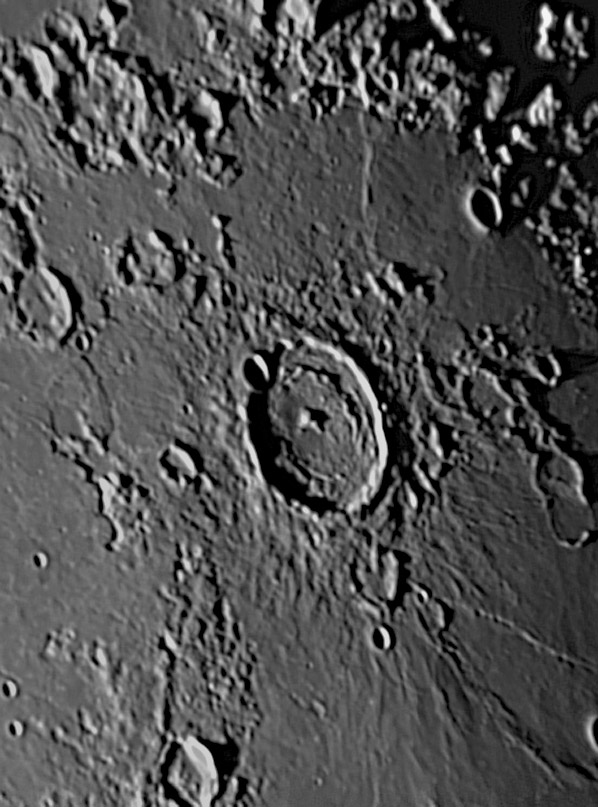
image by K.C. Pau, Hong Kong
Taruntius is one of the oddest young craters on the Moon. It is a floor-fractured crater with a shallow interior and an inner ring of hills. Until recently, its faint rays qualified Taruntius to be considered a Copernican age crater - less than one billion years old. But work demonstrated that rays can be bright for two reasons - they may be relatively recent pulverized rock or they may be intrinsically bright highlands rocks. Taruntius’ rays are bright because they contain highland rocks, which take up to three billion years to fade. Thus Taruntius is no longer considered young - the first sentence of this LPOD needs updating! This image by KC illustrates another characteristic of the lava plain surrounding Taruntius - it is highly textured. Surrounding the crater the plain is covered by radiating ejecta ridges. To the southeast there is a rille with three collapse pits, and the area to the northeast near the crater Asada has thin shadows that could mark the edges of lava flows.
Technical Details:
Feb, 2007. 10″ f/6 Newtonian + 5X barlow + Philips Toucam Pro. Lat.: 22º 15′ N, Long.:114º 10′ E Elevation is 0 meter.
Related Links:
Rükl Plate 37
Taruntius in the-Moon Wiki
Yesterday's LPOD: From the Moon to Paris
Tomorrow's LPOD: Utterly Awesome
COMMENTS?
Register, Log in, and join in the comments.



